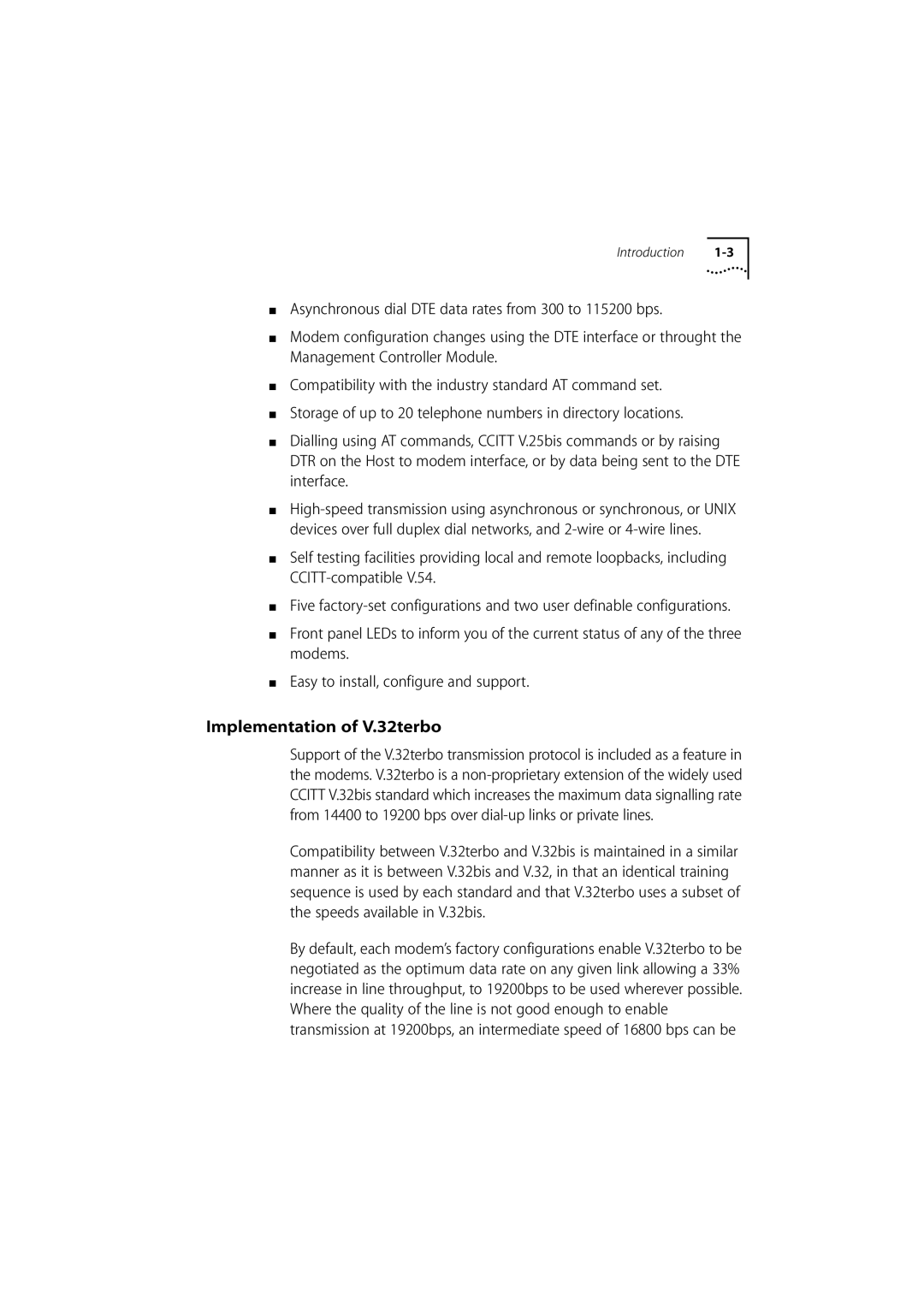Introduction
■Asynchronous dial DTE data rates from 300 to 115200 bps.
■Modem configuration changes using the DTE interface or throught the Management Controller Module.
■Compatibility with the industry standard AT command set.
■Storage of up to 20 telephone numbers in directory locations.
■Dialling using AT commands, CCITT V.25bis commands or by raising DTR on the Host to modem interface, or by data being sent to the DTE interface.
■
■Self testing facilities providing local and remote loopbacks, including
■Five
■Front panel LEDs to inform you of the current status of any of the three modems.
■Easy to install, configure and support.
Implementation of V.32terbo
Support of the V.32terbo transmission protocol is included as a feature in the modems. V.32terbo is a
Compatibility between V.32terbo and V.32bis is maintained in a similar manner as it is between V.32bis and V.32, in that an identical training sequence is used by each standard and that V.32terbo uses a subset of the speeds available in V.32bis.
By default, each modem’s factory configurations enable V.32terbo to be negotiated as the optimum data rate on any given link allowing a 33% increase in line throughput, to 19200bps to be used wherever possible. Where the quality of the line is not good enough to enable transmission at 19200bps, an intermediate speed of 16800 bps can be
